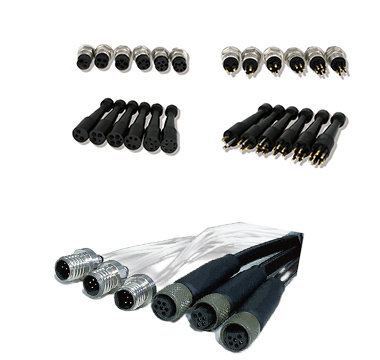Understanding the IP68 Connector Standard
The IP68 rating is a critical benchmark in the design and application of connectors, particularly for industries requiring robust environmental protection. IP, or Ingress Protection, classifies the degree of protection provided by enclosures against intrusion of solids, dust, and water. The first digit, “6,” signifies complete protection against dust and particulate matter, making the connector dust-tight. The second digit, “8,” indicates the ability to withstand prolonged immersion in water under specified conditions, typically beyond 1 meter in depth for over 30 minutes. This dual protection makes IP68 connectors indispensable in harsh environments where exposure to moisture, dirt, or extreme temperatures is common. By meeting this standard, manufacturers ensure reliability and longevity in applications ranging from industrial machinery to consumer electronics.
Design and Engineering of IP68 Connectors
Creating an IP68-rated connector involves meticulous engineering to achieve both mechanical durability and environmental resistance. The housing is often constructed from high-grade materials such as thermoplastics, stainless steel, or aluminum alloys, which resist corrosion and physical stress. Sealing mechanisms, including silicone gaskets, O-rings, and epoxy potting, are integrated to block water and dust ingress. Precision-molded interfaces and multi-layered sealing systems prevent microscopic gaps that could compromise performance. Additionally, many IP68 connectors feature threaded coupling mechanisms or push-pull locking systems to ensure a secure connection even under vibration or pressure. These design elements work synergistically to maintain signal integrity and electrical continuity, even in submerged or dusty conditions.
Applications Across Industries
IP68 connectors are widely adopted in sectors where failure due to environmental exposure is not an option. In industrial automation, they connect sensors and control systems in factories exposed to water, oil, or chemical splashes. The automotive industry relies on them for electric vehicle charging ports, battery systems, and outdoor lighting, where weather resistance is critical. Marine and offshore equipment, such as underwater robotics and sonar devices, depend on IP68 connectors to function reliably at depth. Consumer electronics, including smartphones, wearables, and outdoor cameras, leverage their waterproof capabilities to enhance durability. Even renewable energy systems, such as solar panels and wind turbines, utilize these connectors to endure outdoor extremes. Their versatility underscores their role as a foundational component in modern technology.

Advantages Over Lower IP Ratings
While lower IP ratings like IP67 or IP65 offer partial protection, IP68 connectors provide unparalleled security against environmental hazards. For example, IP67 connectors can survive temporary immersion in water up to 1 meter for 30 minutes, but IP68 guarantees performance in deeper or prolonged submersion. This distinction is vital for applications like underwater instrumentation or flood-prone installations. Furthermore, the complete dust resistance of IP68 eliminates risks posed by fine particles in deserts, construction sites, or mining operations. By minimizing maintenance needs and reducing downtime caused by connector failure, IP68-rated solutions lower operational costs and enhance system reliability. Their robustness also future-proofs installations against increasingly stringent industry standards.
Challenges and Considerations
Despite their advantages, IP68 connectors require careful implementation. Proper installation is essential to maintain the integrity of seals; overtightening threads or misaligning gaskets can create vulnerabilities. Temperature fluctuations may cause materials to expand or contract, necessitating designs that account for thermal cycling. Users must also adhere to manufacturer specifications regarding mating cycles, as repeated connections can wear down sealing surfaces. Additionally, while IP68 protects against water and dust, it does not cover resistance to chemicals, UV radiation, or mechanical impact unless explicitly stated. Selecting connectors with supplementary certifications, such as MIL-STD or ATEX, may be necessary for specialized environments. Regular inspections and preventive maintenance further ensure sustained performance over time.
Future Trends in IP68 Connectivity
As technology advances, the demand for IP68 connectors is growing alongside innovations in IoT, 5G, and smart infrastructure. Miniaturization trends are driving the development of compact yet rugged connectors for wearable devices and medical implants. Hybrid connectors that combine power, data, and fiber optics in a single IP68-rated housing are gaining traction in automation and telecommunications. Meanwhile, sustainability initiatives are pushing manufacturers to adopt recyclable materials without compromising performance. The rise of underwater data centers and deep-sea exploration will further push the boundaries of IP68 capabilities. With these advancements, IP68 connectors will continue to evolve, enabling safer, more efficient, and environmentally resilient solutions across global industries.